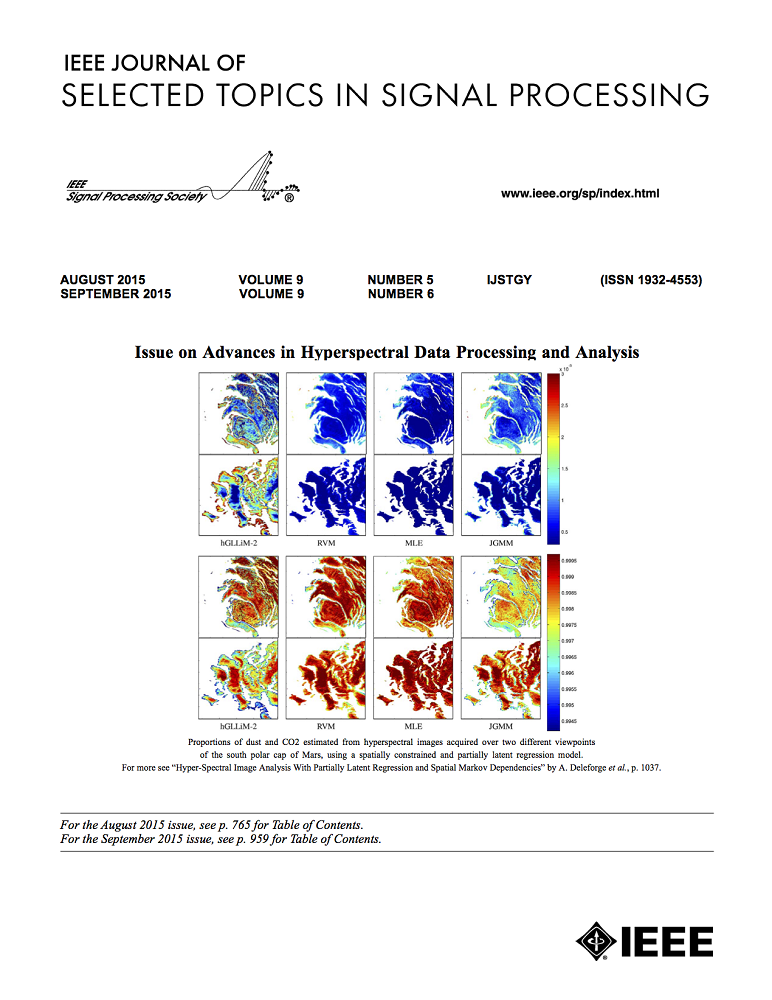毫米波大规模无授权传输的波束扫描设计
IF 8.7
1区 工程技术
Q1 ENGINEERING, ELECTRICAL & ELECTRONIC
IEEE Journal of Selected Topics in Signal Processing
Pub Date : 2024-08-29
DOI:10.1109/JSTSP.2024.3451706
引用次数: 0
摘要
为了解决新兴的大规模机器类型通信应用对频谱资源不断增长的需求,将大规模无授权传输集成到毫米波(mmWave)系统中是有希望的。由于混合波束形成结构下的波束扫描方案通常用于增强信号功率和扩大覆盖范围,本文研究了混合波束形成结构下毫米波大规模无授权传输的有效波束扫描方案。在该方案中,我们提出了一种波束扫描设计算法来优化波束形成矩阵,旨在根据上行链路到达角(AoAs)的统计信息最大化频谱效率,同时保证服务质量(QoS)。为了解决波束形成矩阵在不同波束扫描时隙之间复杂的相互依赖关系,我们的解决方案首先采用两阶段遗传算法,该算法根据用户的上行aoa预分配用户的访问时隙,将波束形成设计问题分解为每个时隙的独立子问题。随后,提出了一种双层波束形成设计算法来解决这些子问题,优化波束形成矩阵,提高频谱效率并满足QoS约束。大量的仿真结果验证了所提出的波束扫描设计算法在提高频谱效率和满足QoS要求方面的有效性。本文章由计算机程序翻译,如有差异,请以英文原文为准。
Beam-Sweeping Design for mmWave Massive Grant-Free Transmission
To address the escalating demand for spectrum resources in emerging massive machine-type communication applications, it is promising to integrate massive grant-free transmission into millimeter-wave (mmWave) systems. As beam-sweeping schemes under hybrid beamforming architectures are commonly used to enhance signal power and extend coverage, this paper investigates an efficient beam-sweeping scheme for mmWave massive grant-free transmission under hybrid beamforming architectures. In this scheme, we propose a beam-sweeping design algorithm to optimize beamforming matrices, aiming to maximize spectral efficiency while ensuring quality of service (QoS) based on statistical information on uplink angles of arrival (AoAs). To address the intricate interdependence of beamforming matrices across different beam-sweeping slots, our solution begins with a two-stage genetic algorithm that pre-assigns users' access slots based on their uplink AoAs, decomposing the beamforming design problem into independent subproblems for each slot. Subsequently, a dual-layer beamforming design algorithm is proposed to solve these subproblems, optimizing beamforming matrices that enhance spectral efficiency and meet the QoS constraint. Numerous simulation results verify the effectiveness of the proposed beam-sweeping design algorithm in improving spectral efficiency and the capability to satisfy the required QoS.
求助全文
通过发布文献求助,成功后即可免费获取论文全文。
去求助
来源期刊

IEEE Journal of Selected Topics in Signal Processing
工程技术-工程:电子与电气
CiteScore
19.00
自引率
1.30%
发文量
135
审稿时长
3 months
期刊介绍:
The IEEE Journal of Selected Topics in Signal Processing (JSTSP) focuses on the Field of Interest of the IEEE Signal Processing Society, which encompasses the theory and application of various signal processing techniques. These techniques include filtering, coding, transmitting, estimating, detecting, analyzing, recognizing, synthesizing, recording, and reproducing signals using digital or analog devices. The term "signal" covers a wide range of data types, including audio, video, speech, image, communication, geophysical, sonar, radar, medical, musical, and others.
The journal format allows for in-depth exploration of signal processing topics, enabling the Society to cover both established and emerging areas. This includes interdisciplinary fields such as biomedical engineering and language processing, as well as areas not traditionally associated with engineering.
 求助内容:
求助内容: 应助结果提醒方式:
应助结果提醒方式:


